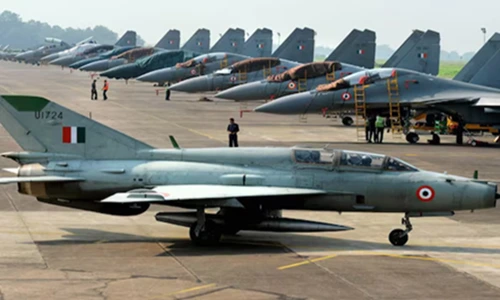The MiG-21 entered Indian service in 1963. After 62 years of service, the Indian Air Force will finally bid farewell to the last batch of MiG-21 fighter jets. These will be decommissioned on September 19 at the Chandigarh airbase after a farewell ceremony.
From 1970s to the mid-2000s, MiG-21 induction has become the backbone of India’s airpower.
The aircraft is going out with one last giant combat feat that took place on 27 February 2019. Indian Group Captain Abhinandan Varthaman shot down a Pakistani F-16 with his MiG-21 Bison during an aerial dogfight. It was an encounter triggered by an attempted violation of Indian airspace.
Designed by the Mikoyan-Gurevich Design Bureau in the 1950s, had its first flight in the year 1956 and entered service in the Soviet Union by 1959. The MiG-21 precedes MiG-15 and MiG-17 in design but not in technology. MiG-21 was introduced with supersonic performance and a delta wing which is ideal for high-speed interception.
It features a a single-engine design, delta-wing configuration, and basic avionics can carry heat-seeking missiles, an internal cannon, and unguided bombs or rockets.. Built for short-range engagements, it could exceed speeds of Mach 2. MiG-21 grew to symbolise not only Cold War-era, but also spread across the developing world.
In comparison to the F-16, MiG-21 capabilities were practically ancient. But the triumph of MiG-21 over F-16 is a humiliation for a more advanced opponent.
MiG-21: The story in India is one of both glory and deep grief
During the 1971 Indo-Pak War, Indian MiG-21s proved decisive, shooting down Pakistani F-104 Starfighters. Since then, it has taken part in every major air operation—including “Operation Sindoor” in May this year.
With mechanical issues, the aircraft was involved in multiple fatal crashes. Around 200 pilots and at least 60 civilians have died in 400 MiG-21 accidents. Between 1966 and 1984, over 840 MiG-21s were built in India by Hindustan Aeronautics Limited (HAL). Unfortunately, more than half were lost in accidents.
MiG-21 : Service history spans multiple continents
- It was also widely used in the Arab-Israeli conflicts—particularly the 1967 Six-Day War and the 1973 Yom Kippur War—by Egypt, Syria, and Iraq.
- In Vietnam, it was flown by North Vietnamese forces who used its agility and speed at low altitudes to ambush American F-4 Phantoms.
- In Africa, the Balkans, Central America, and Afghanistan, the aircraft served various Soviet allies and client states.

